#2nd century BCE
Explore tagged Tumblr posts
Text

Pair of gold earrings with an Egyptian Atef crown set with stones and glass, Greek, 3rd-2nd Century BCE
From the Met Museum
#earrings#gold#stone#glass#jewellery#fashion#fashion history#greek#ancient greek#ancient greece#ancient#3rd century bce#2nd century bce#bce
546 notes
·
View notes
Text
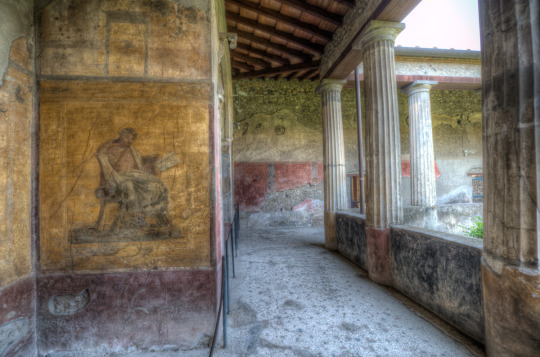
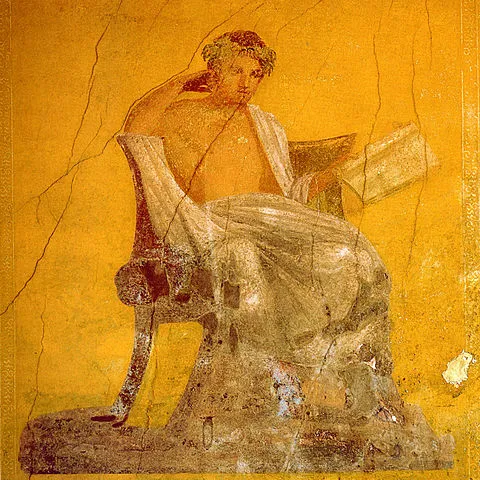
The House of Meander. interior. Pompeii
Fresco depicting the poet meander. 250-79 BCE
#the house of meander#pompeii#roman#meander#fresco#3rd century BCE#2nd century BCE#1st century BCE#roman art
221 notes
·
View notes
Text

Roman Calendar - May 1, Laribius
Celebration of Lares Praestites - protecting spirits of the the city - who had a temple on Via Sacra. According to Pliny the Elder their worship was instituted during the reign of Servius Tullius.
Coin:
*Lucius Caesius' denar (112-111 BCE) depicting Lares Praestites. The dog is probaly a symbol of watchfulness. Or it may refer to a tradition that a dog was the ordinary sacrifice offered to the Lares. (source: A dictionary of Greek and Roman Mythology)
42 notes
·
View notes
Text

Ancient Greek mosaics, 2nd century BCE, Zeugma, Turkey.
15 notes
·
View notes
Text

Pons Aemilius, Rome
* 2nd century BCE
Rome, July 2015
162 notes
·
View notes
Photo
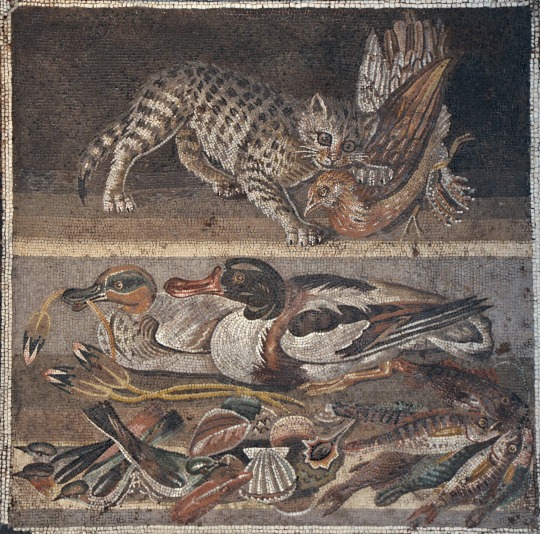
Mosaic depicting a cat with a partridge (above) and ducks, fish & shellfish (below),
From the House of the Faun, Pompeii, Italy,
Late 2nd Century BCE
Naples Archaeological Museum
#art#design#animals#feline#cat#duck#mosaic#partridge#fissh#pompeii#italy#history#roman#style#2nd century BCE#house of the faun#mythology
162 notes
·
View notes
Text

Marble Head of a Roman Goddess 2nd Century BCE
Marble (Paros 1). 18 1/2 × 14 × 11 in. (47 × 35.6 × 27.9 cm).
#Marble Head of a Roman Goddess#2nd Century BCE#marble#marble sculpture#marble statue#ancient artifacts#archeology#archeolgst#history#history news#ancient history#ancient culture#ancient civilizations#ancient rome#roman history#roman empire#roman art
72 notes
·
View notes
Photo
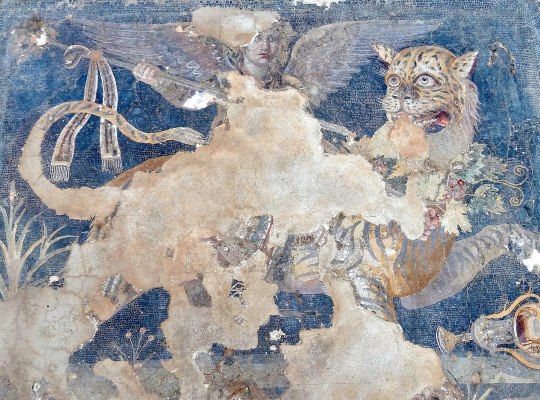
A Hellenistic Greek mosaic depicting the god Dionysos as a winged daimon riding on a tiger, from the House of Dionysos at Delos (which was once controlled by Athens) in the South Aegean region of Greece, late 2nd century BCE, Archaeological Museum of Delos. [Robert Scott Horton]
* * * *
“Cultivating loyalty is no small thing. George Orwell, for example, considered preferential loyalty to be the “essence of being human.” Critiquing Gandhi’s recommendation — that we must have no close friendships or exclusive loves because these will introduce loyalty and favoritism, preventing us from loving everyone equally — Orwell retorted that “the essence of being human is that one does not seek perfection, that one is sometimes willing to commit sins for the sake of loyalty … and that one is prepared in the end to be defeated and broken up by life, which is the inevitable price of fastening one’s love upon other human individuals.”
— The Myth of Universal Love - NYTimes.com
[Quidnunc: Friendship]
#Hellenistic Greek mosaic#Dionysos#a winged daimon riding a tiger#2nd century BCE#Robert Scott Horton#loyalty#friendship#The Myth of Universal Love#quidnunc
78 notes
·
View notes
Text
Finestre sull'Arte: The House of the Labyrinth in Pompeii: the first known labyrinth mosaic (20/09/23)
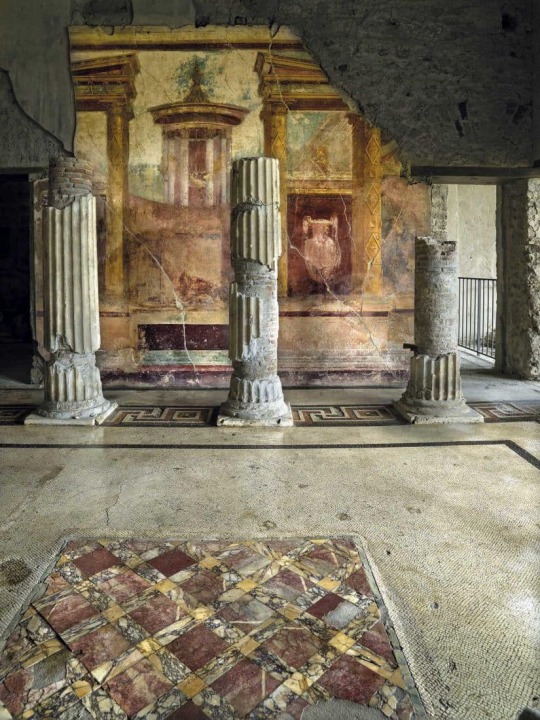
House of the Labyrinth, Pompeii.
#Pompeii#House of the labyrinth#Roman#domus#fresco#mosaics#ancient#art#2nd century BCE#1st century CE
2K notes
·
View notes
Text
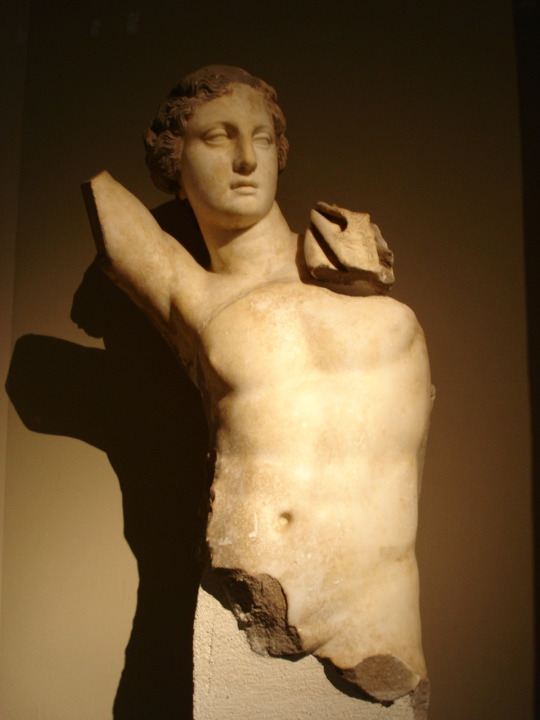
Statue of Apollo at the Istanbul Archaeological Museum From Tralles, 2nd century BCE
Picture by: 🏺
#ANTIGÜEDADES 💎#ancient art#hellenistic art#hellenistic#2nd century bce#ancient history#apollo#mediterranean gods
69 notes
·
View notes
Text

#One of the three Roman pools of Gafsa#in Tunisia#two of which are open. Built in the 2nd century BCE#they are about five meters deep and are fed by hot water springs.
5 notes
·
View notes
Text

Bronze statuette of a goose, Greek, 3rd-1st Century BCE
From the Met Museum
#goose#bronze#statue#statuette#art#sculpture#greek#ancient greek#ancient greece#ancient#1st century bce#2nd century bce#3rd century bce#bce
272 notes
·
View notes
Text

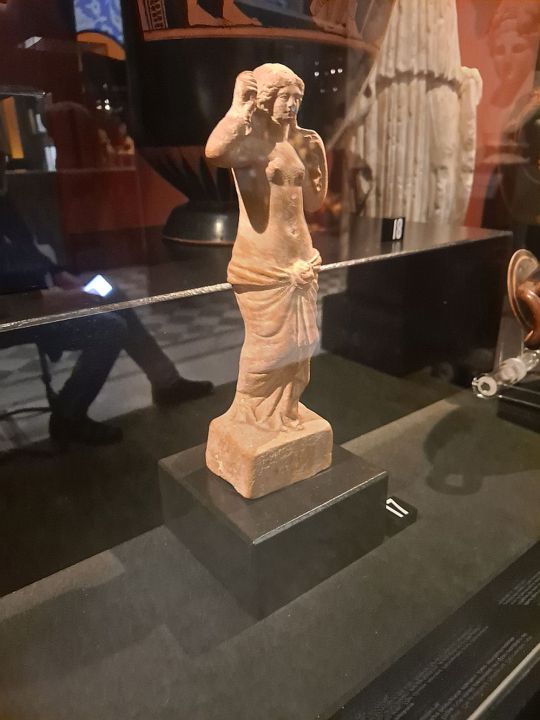

Aphrodite
* Asia Minor
* 300-100 BCE
* terracotta
* Medelhavsmuseet, Stockholm
Stockholm, November 2023
#Aphrodite#goddess#ancient#Greek#art#terracotta#statuette#2nd century BCE#3rd century BCE#Asia Minor#Medelhavsmuseet Stockhom#Swedish Museums#my photo
229 notes
·
View notes
Text
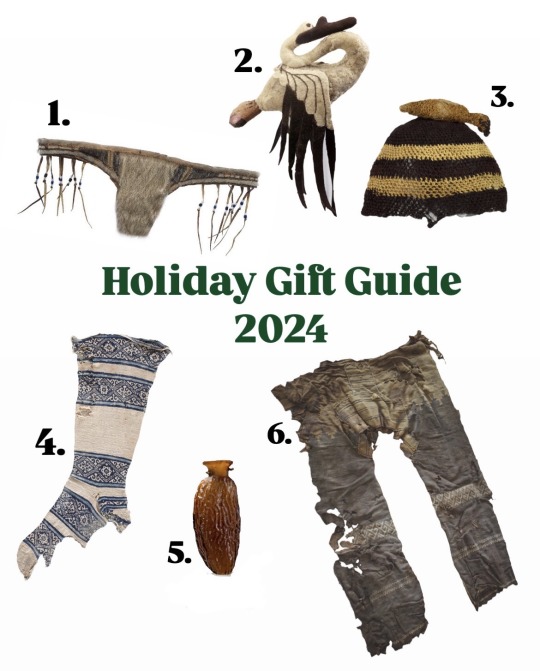
1. 19th century sealskin thong, Greenland
2. Pazyryk swan made of felted reindeer wool, circa 400 BCE, Siberia
3. Child’s hat with bird, nalbound cotton and wool, 1000–1476 CE, Chancay culture, Peru
4. Knitted cotton sock from Egypt, 1000-1200 CE
5. Sidonian flask shaped like a date, 1st-2nd century CE, Syria or Palestine
6. World’s oldest surviving pants, woven wool, circa 1300-1000 BCE, China
10K notes
·
View notes
Text

Dionysus in female attire, 2nd - 1st century bce.
Found in Delos, at the small sanctuary of Dionysus
(ft kitty!!!)
507 notes
·
View notes
Text
𝐝𝐨𝐦𝐢𝐧𝐚 𝐨𝐟 𝐭𝐡𝐞 𝐞𝐚𝐬𝐭
◦ ♡



𝐞𝐦𝐩𝐞𝐫𝐨𝐫!𝐜𝐚𝐥𝐞𝐛 𝐱 𝐩𝐫𝐢𝐧𝐜𝐞𝐬𝐬!𝐫𝐞𝐚𝐝𝐞𝐫 𝐱 𝐞𝐦𝐩𝐞𝐫𝐨𝐫!𝐬𝐲𝐥��𝐬 — non!mc. a princess from a powerful merchant kingdom is thrust into a political marriage with rome’s most feared military emperor—only to catch the eye of a rival sovereign who believes her freedom is worth starting a war. 𝐬𝐞𝐭𝐭𝐢𝐧𝐠 — set during the early imperial period of rome, the story unfolds at the height of political intrigue and military dominance, where empires clash, alliances shift. story will take place between 1st century bce – 2nd century ce, give or take. 𝐭𝐚𝐠𝐬 / 𝐭𝐰 — swearing, nsfw language, political manipulation, power imbalance, emotional manipulation, toxic relationships, war and violence, sexual themes, misogyny/patriarchal culture, classism and elitism, culture tensions, xenophobia, racism, non consensual stuff at times.. uhh.. romantic love triangle, slow burn, angst, fluff, smut 𝐧𝐨𝐭𝐞 — please note that this is a civilization thousands and thousands of years ago, so they probably aren't as socially accepting.. you are also of arabian and hellenistic heritage. normally i am ambiguous of how i describe the protagonist of my stories, but i'll be a bit more focused on my details in this story. I CANNOT STRESS THIS ENOUGH, IF YOU HAVE ANY OF THESE TRIGGERS PLEASE BE MINDFUL. i will also put a DISCLAIMER of any non consensual stuff or any triggering events that may end up happening PRIOR to the actual scene. (obviously it will not be frequent thing) — reblogs comments & likes are appreciated. let me know if you'd like to be added to the taglist! 𝐜𝐡𝐚𝐩𝐭𝐞𝐫 — PROLOGUE | next chapter

this will be a bit short. its the prologue— so its going to just go over a little tid bit of how everyone is going to be and you can see how the atmosphere is.
the morning is soft with silence.
sunlight filters through the sheer drapes like it’s hesitant to enter, golden dust suspended in the hush. your room smells faintly of rose oil and crushed figs, of silk warmed by the sun. servants move quietly around you—gentle hands braiding your hair, smoothing the folds of your linen dress, adjusting the golden clasp at your shoulder. you don’t speak. neither do they. it’s an old, practiced ritual. the preparation of a daughter for something unspoken.
you watch yourself in the polished bronze mirror. not a girl anymore, not quite a queen. something in between. something uncertain. how were you feeling? you felt dreadful. to be a pawn was never a good thing. a knock at the door. soft, like you can hear misery through a pounding. then a murmur. “his majesty is waiting.”
your sandals smack softly against the stone as you walk, heart quiet but heavy. the hallway stretch long, filled with mosaics that tell stories of your ancestors—men who conquered, the women who waited. you walk past them like a ghost. your father is standing near the open colonnade, among the atrium, staring out at the city below. his toga catch in the breeze like banners. he does not turn when you enter.
“you sent for me,” you say above a whisper, as the chamber echoed your voice. he nods once. his voice is as it always is— stoic. weathered by experience.
“rome has made an offer. emperor caleb xia would like your hand in marriage”
you say nothing. the wind picks up. it carries the scent of figs and pomegranates— your favorites. you stand, stiffened. is this from the emperor himself, or his senate?
“you’ve always understood the weight of your position,” he continues, still not looking at you. “this isn’t punishment. it’s legacy.” you wonder if he’s speaking to himself.
“and the emperor?” you ask softly. “do you trust him?” he couldn’t even lie if he tried. your father turns, finally, eyes sharp and tired all at once. “no. but alliances are not built on trust. they are built on necessity.” he steps closer, and for a moment, he is not a king, but your father. his hand rests on your shoulder, not heavy, but firm. “you will do what must be done,” he says. “as we all have.” you nod. because what else is there to say? no? what the hells would even happen if you said that? with an even heavier heart, and a tight lip, you bow slightly, before turning heels and walking back to your chamber.
later, when you return to your chambers, you unpin your hair with trembling fingers and stare at the mirror again, and when you look up to the mirror, your tears fall. you realize this may be the very last time you could have your peace to yourself— at least for a while. you weren’t a woman basking in the sunlight anymore. laying near the ravine with your closest friends. you were a pawn.

the air inside the tent tastes of iron and dust.
outside, the murmurs of the camp never sleep—shields being oiled, blades checked again and again, men speaking low in the hush of an almost-won war. the sky beyond the canvas is the color of smoke, the kind that clings to your skin long after the fires are gone.
caleb stands alone over the war table, eyes fixed on the parchment map that bears the scars of too many campaigns. lines drawn and redrawn. cities conquered. rivers crossed. this battle will end tomorrow, and with it, resistance in the east.
he doesn’t smile. he never does. victory is expected of him. and expectations are chains dressed as crowns. a soldier enters, bows low. news of the enemy’s retreat. talk of surrender. a whisper, almost offhanded, like it doesn’t matter:
“a formal alliance is being discussed in the senate—nabira’s hand in marriage. her daughter.”
caleb says nothing at first. he does not lift his head. just another treaty. just another crown to bind with rome. how many women were given to him for this reason? he couldn’t count the amount of attempted alliance and leverage thrown at him. a mere woman’s soul is the price of not being taken and pulled apart? no. no, this would be different.
“what’s her name?” he asks, not because he cares.. just to know what name history will one day try to stitch beside his. the soldier hesitates. then: “they don’t speak it aloud, not yet. only that she is.. magical…shadowed... her father guards her like a secret.”
caleb’s gaze lingers on the edge of the map, where nabira is inked in faint gold. a kingdom on the edge of empires. he says nothing else, and neither does the soldier, and after a couple beats skip, the soldier leaves.
caleb stays there a while longer, the quiet pressing in as he glides his fingers across the map, calculating to himself. he knows better than to believe in fate. but still—he wonders what kind of woman is hidden behind a crown, guarded like a blade, spoken of only in quiet corners of powerful rooms. was she formidable? he wonders. his heart races at the slightest at the thought of you.
and he wonders what kind of man he will need to be to win your loyalty. surely not with war? with silken drapes, and golden gifts. will he need to throw lavish expenses to win such an even more lavish heart? he was thinking too hard— he doesn’t even know a god damn thing, and this was distracting him.

shahanshah - king of kings / emperor (persian. pronounced sha-han-sha)
the night air in parthia was cool, the scent of myrrh drifting through the royal palace gardens. shahanshah sylus stood alone beneath the towering date palms, his thoughts far from the usual state matters. the sky stretched dark above him, the stars twinkling like scattered diamonds, but there was little peace in his mind tonight. the soft footsteps of an approaching figure broke the silence. the emissary bowed deeply as he came closer, careful not to disrupt the stillness. “shahanshah,” the emissary spoke, voice low and respectful. “we’ve received word from the princess' brother. the decision has been made.” sylus didn’t turn right away, his gaze fixed on the horizon. his voice, when it came, was quiet but sharp.
“what decision?”
“the marriage… it’s been arranged. the princess of nabira will marry emperor caleb of rome.”
sylus paused, his fingers tightening on the edge of the stone column beside him. he hadn’t expected this development, not so soon. but your father had always been pragmatic, and in these times of shifting alliances, a marriage to rome made sense—at least politically. still, the news stung.
“and the princess?” sylus asked, his voice colder than it had been moments before. “was she consulted?” it was a quick quiet, the emissary hesitated. “she… was informed. the decision was her father’s. from what i understand, she did not take it well. there were tears, and anger.”
sylus absorbed the information quietly, his gaze never leaving the view before him. he knew this was coming. the union of rome and nabira had been hinted at for months, but hearing it was another matter entirely. he didn’t think that your father really had the balls to actually pull through.
“her brother– the diplomat, he must have known this was coming,” sylus said, a small frown pulling at his lips. “why send the message to me now?”
the emissary nodded. “her brother… he has long worked with you, shahanshah. he is a trusted ally in trade, and he wanted to ensure you heard it from him directly. he also believes this marriage could open doors for more favorable dealings between parthia and nabira.”
sylus turned now, finally facing the emissary. his red eyes were hard, calculating. unreadable. the emissary shifted his posture.
“so this marriage is as much about trade as it is about politics?” sylus asked, voice laced with an edge. “but what of the princess? does she have no say in the matter?”
“her father has made the decision. the princess is caught in the web of diplomacy. her brother… i believe he tried to shield her from the worst of it, but ultimately, the decision rests with the king.”
sylus’ jaw clenched, and his mind raced. the political situation was delicate, but this… this felt different. he feels as if he’s seeing a life slip from its freedom.
“what does her brother say?” sylus pressed. “is he pleased with this marriage?”
the emissary hesitated again. “he does what is best for nabira. but it is clear he does not want to see her in the hands of rome. he worries for her.”
sylus’ lips tightened in thought. he had always known your brother had his eyes set on securing an advantageous position for nabira, but this marriage would change everything. the alliance with rome would tilt the scales of power in ways that were difficult to predict. an insurmountable amount of money would be handed over to the most powerful empire in the world. the silk road would bloom into something more.
he straightened, his voice firm as he turned back toward the emissary, “tell her brother that i expect an update—soon. and i will not forget what this means for parthia. if rome wants nabira so badly, they will have to deal with us.”
the emissary nodded and bowed deeply before taking his leave. as sylus watched him depart, his thoughts lingered on you. you were bound by duty, but he knew that the chains of politics could break, and alliances could shift.
“she may not have a say now,” sylus murmured to himself, staring into the night. “but nothing is final until i decide it is. and i will make sure that, in the end, she has her freedom.”

𝐭𝐚𝐠𝐥𝐢𝐬𝐭 ! - @rcvcgers
#lads x reader#love and deepspace#lads#lads mc#loveanddeepspace#lnds#sylus x mc#sylus x you#lads sylus#l&ds sylus#love and deepspace sylus#sylus love and deepspace#sylus x reader#reader x sylus#lnds sylus#lads caleb#caleb x reader#lnds caleb#calebmc#caleb lads#love and deepspace caleb#caleb x non!mc reader#mc x caleb#non mc x caleb#non!mc x caleb#xia yizhou#sylus x non!mc reader#qin che
409 notes
·
View notes